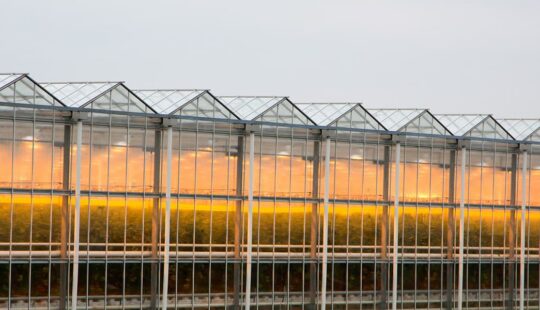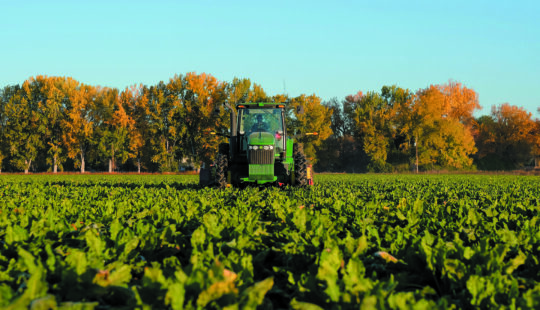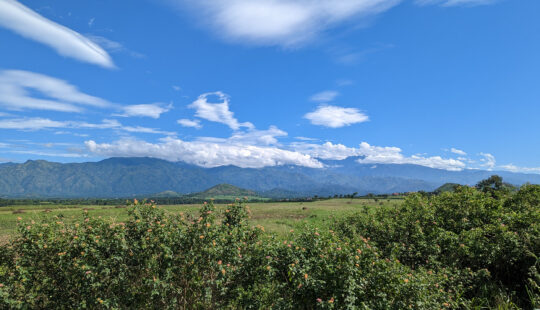Food security for the world’s growing vulnerable populations is driving digital agriculture across ecosystems united in providing access to affordable and healthy meals. Statistics reveal the incredible imbalance between supply and demand. While approximately 2.4 billion people worldwide are moderately to severely food insecure, the UN reported that a staggering 931 million tons of food is wasted each year.
The impacts of climate change and geopolitical conflicts coupled with volatile commodity prices and inflation are only exacerbating food supply chain challenges. Food prices are expected to rise 80% by 2050, and crop yields are forecast to decrease up to 30% by 2080. During a recent event at SAP’s Hudson Yards office in New York, agriculture experts and policymakers discussed how organizations in the private and public sector can work together to build a more sustainable food supply.
“SAP continues to co-innovate with agribusiness leaders to digitalize the farm-to-consume value chain,” said Anja Strothkamper, global vice president of Agribusiness and Commodity Management at SAP. “Every organization in the ecosystem has the opportunity to come together and make a significant contribution towards affordable, efficient, and resilient farming, food production, and distribution. We collaborate across the food chain including agricultural production and farming, origination and trading, commodity processing, food manufacturing and packaging, and retail. These digital ecosystems help companies manage risk, improve decision-making, and maximize crop yields.”
Data Insights Reduce Complexity for Cost-Efficient Sustainable Farming
Case in point is the collaboration between SAP and VISTA that uses satellite images and AI-fueled algorithms to create digital twins that can simulate predictive forecasts for optimized decision-making in farming. VISTA is a subsidiary of BayWa, Germany’s largest digital agricultural company. I sat down with Strothkamper and Tobias Fausch, Baywa’s CIO, who shared how working together is cultivating the future of agriculture.
“Satellite imagery plus AI models capture and analyze a wide range of data in digital twins, including soil quality, crop variety and health, water availability, weather conditions, and other farming activities,” said Fausch. “The technology simulates yield predictions, calculating various scenarios based on precise risks by field location and weather patterns. Farmers can automate optimal soil preparation, irrigation and fertilization, crop rotation, and harvest times for sustainable efficiency and high yields. Even with the effects of climate change, these models reveal that we have sufficient resources to better manage global, end-to-end farming for adequate food production.”
In one example, a soybean farmer in India used VISTA to harvest the highest yield ever, despite a drought in the country. Fausch said that optimizing crop yields sustainably bolsters food security and also makes economic sense.
“Using the technology, we can automatically calculate the availability of water for not just individual farms, but also a region or country,” said Fausch. “This data can help governments better manage water resources for maximum crop yields in the face of events that make crop yields unpredictable. For example, if there’s a drought in one part of the country, water could be transported into dryer regions for storage and irrigation where it’s needed most.”
Digital Platform Scales Up Secure Food Supply Chains
Accessibility to advanced technology is crucial to organizations in the food value chain, especially smallholder farms. The collaboration between SAP and VISTA offers growers of all sizes a simple yet powerful tool to help capture intelligent data in the field using their mobile device. Available on SAP Store, VISTA is integrated with SAP Intelligent Agriculture.
“The digital twin is the smart superpower, and SAP makes the information available across the digitalized value chain, triggering business processes like automated irrigation and fertilizer services, increased storage and transportation capacities for higher yields, or accurate government subsidy payments for fertilizer,” said Strothkamper. “Public and private sectors can partner to extract value from the predictive modeling data. Farmers can increase yields, banks would have the traceability for investment decisions in startups to grow the economy, insurers can track claims, and governments can better plan and respond to dynamically changing community needs.”
Generative AI for Intelligent Agriculture
SAP’s agriculture solutions are evolving to incorporate the latest technologies like AI for valuable business results. An African-based sugar manufacturer uses SAP Intelligent Agriculture to help smallholder farmers digitalize operations, providing advice based on captured data in the field and beyond. Farmers have already improved crop yields based on harvest time guidance.
“We built this solution through our ongoing collaboration with organizations that are part of the SAP Advisory Council for Agribusiness,” said Strothkamper. “Climate change has rendered time-honored farming practices irrelevant. Generative AI can democratize intelligent agriculture with data-driven insights. Tools based on ChatGPT and other large language models that provide advice based on tremendous amounts of data throughout the ecosystem are the vision for the sustainable food value chain of the future.”
Follow me @smgaler



